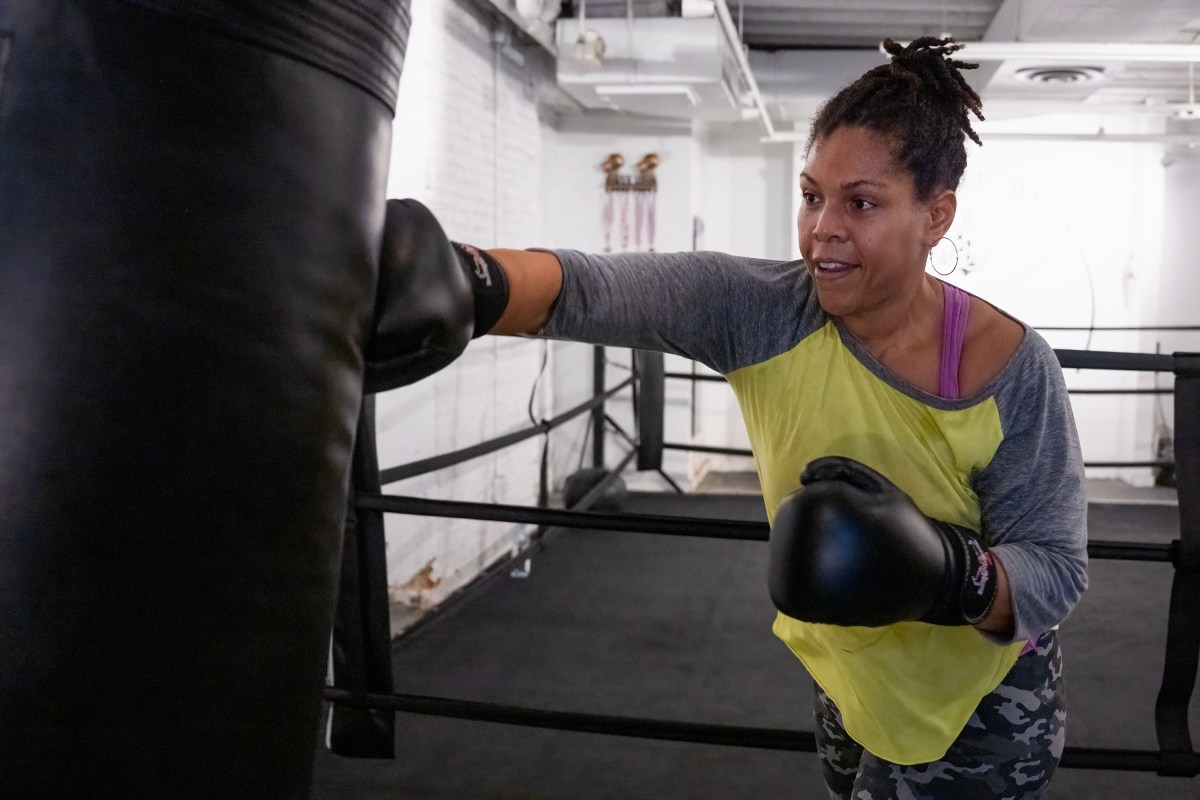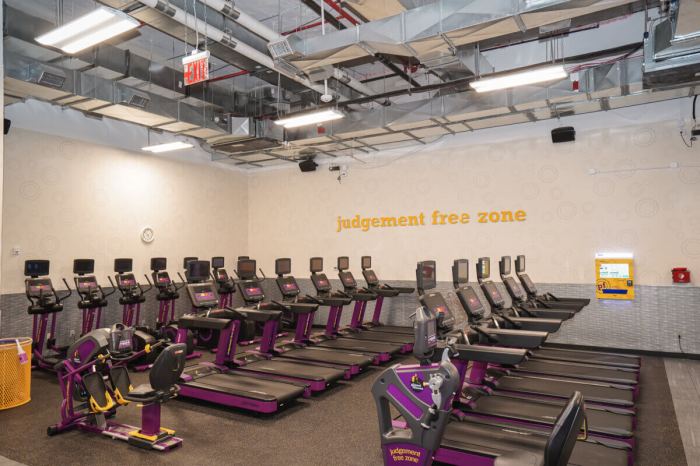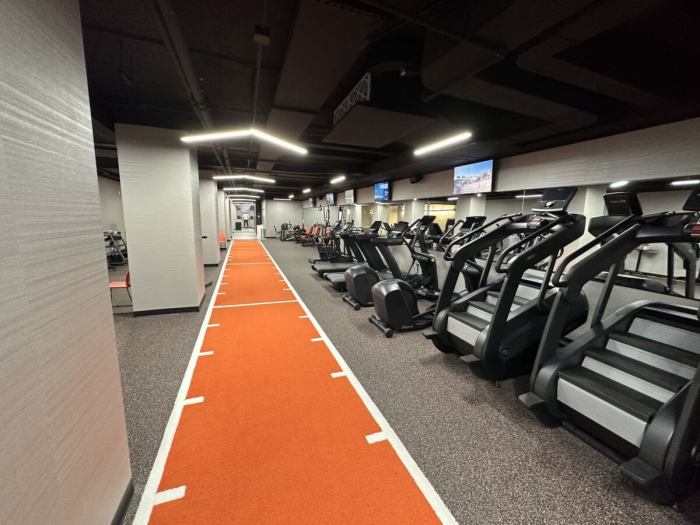In 2017, we did our best to exercise and eat right, get some sleep, not drink too, too much and manage our anxiety. Let’s just say it was a trying time. When it comes to health and wellness, these are our biggest takeaways from all the studies we read, experts we interviewed, workouts we tried and nutrition advice we heeded. Here’s to a healthier 2018.
You should probably get a dog, or at least some plants
Scientific research and personal accounts can attest that having dogs makes for healthier, happier lives. We talked to Eric O’Grey, author of the memoir “Walking with Peety,” who lost 140 pounds, reversed his type 2 diabetes and became an avid marathon runner, all because he adopted a rescue dog who gave him a reason to get out of the house and get moving every day. (And by the way: Sitting can kill you.)
A recent study published in Scientific Reports corroborates the health benefits of pups, finding that dog owners live longer, with a reduced risk of death from cardiovascular diseases and death of any cause. If you don’t have a partner, all the more reason to dog up: This decreased risk was even greater for single people.
No time for a pup? At least get some plants in your life! We talked to horticultural therapist Dr. Matthew Wichrowski, who uses plant exercises to rehabilitate patients suffering from mental and physical disabilities at NYU Langone. He spoke to the psychological benefits of spending time in biophilic environments — even if it’s just gazing at the snake plant on your desk — and the physical, too: A 2005 study found that plant therapy sessions decrease the heart rate and lower blood pressure in patients.
Herbs do the trick, too. We talked to Amy Galper, the founder of the NY Institute of Aromatherapy, who explained how essential oils can work wellness, aiding in relaxation, improving sleep and remedying aches and pains. While you’re chill-seeking, it also helps to get off Instagram and start journaling.
Newsflash: Being a woman of reproductive age is rough
Periods are a pain. But they don’t have to be. We talked to Lauren Schulte, founder of the Flex Co., who created a disposable menstrual “disc” that’s an environmentally friendly, comfortable tampon alternative. It also prevents against yeast infections and is designed to be leak-free, so you can have less messy period sex.
Getting pregnant is a hurdle for some women — approximately 10 percent struggle with infertility, according to the CDC. If you’re considering in vitro fertilization to help conceive, it’s important to know that it’s not always covered by insurance, can cost $12,400 on average per cycle if you’re paying out of pocket and can take several cycles to work. Sometimes, things can go horribly wrong. Nadine Kenney Johnstone, author of the memoir “Of This Much I’m Sure” told us her IVF horror story. But don’t worry: it has a happy ending.
If you do get pregnant, crazy things can happen to your body! Former “Destiny’s Child” member Kelly Rowland wrote a whole book about it. She also talked to us about experiencing diastasis recti, a common condition nobody told you about in which the abdominal muscles separate during pregnancy because of pressure from the growing fetus. She recovered after physical therapy and pelvic floor exercises.
Post-partum, be prepared for the trials of breastfeeding. After watching Hannah struggle to get her baby to latch in the “Girls” season finale, we asked six new moms to share their difficulties. Let’s just say it doesn’t always come naturally.
Men have some troubles, too
Erectile dysfunction is an issue for more young men than you think, affecting one out of four men under 40, according to a 2013 study published in the Journal of Sexual Medicine. The stigma keeps many men from seeking treatment, but a new startup is changing that. Roman is a telehealth platform that helps men get diagnosed with and received treatment for ED, without having to leave their home.
We’re all drinking too much
In August, a study came out in the journal JAMA Psychiatry declaring alcohol abuse in America a public health crisis. Addiction specialist Dr. Jeremy Frank told us how to spot signs that drinking might be a problem for us or loved ones. The National Institute of Alcohol Abuse and Alcoholism defines moderate drinking as no more than one drink a day for women, two drinks a day for men, to give you an idea of how far you might be overshooting.
But when it comes to the risk of breast cancer, even one drink a day can increase the chances for women. A scientific review from The American Society of Oncology found that moderate to heavy drinking also increases the risk of cancers such as colorectal, liver, esophygeal and pancreatic.
But pot is extremely promising
Studies have shown that cannabis can treat a number of medical conditions, from anxiety to seizures to chronic pain, and is proven to be a safe and effective alternative to opiods. We profiled Erin Gore, a Sonoma, Calif.-based founder of the Garden Society, a brand that creates cannabis confections to help women manage their anxiety and get a better night’s sleep. Cannabidiol, or CBD, a non-psychoactive component of the marijuana plant, has a lot to do with these health benefits. But be careful shopping for it on the internet — 70 percent of CBD supplements sold online don’t contain what they say they do.
The latest on how to keep your heart healthy
In November, the American Heart Association raised the standards for healthy blood pressure levels. Now, 130/80 mm HG constitutes hypertension.
This year, the AHA also released a controversial statement that coconut oil is actually very high in saturated fats and can lead to high cholesterol.
Good news is there are lifestyle changes that will help lower your blood pressure and keep your heart healthy. Cardiologist Dr. Suzanne Steinbaum gave us advice on preventing cardiovascular disease, such as substituting healthy unsaturated fats, like avocados, olive oil, nuts, for saturated fats, eating lots of vegetables and limiting our meat intake. She also suggested drinking moderately and exercising regularly — at 30 minutes/five days a week of moderately intense workouts, or high intensity workouts 20 minutes/three days a week.
Don’t be afraid to go full Gilmore: It turns out coffee is actually really good for you: Researchers found that folks who drink one or more cups every day have lower mortality rates overall and are less likely to die from heart disease, cancer, stroke and diabetes.
Weight loss isn’t all about calorie counting
Calories in vs. calories out: That’s the mathematical formula for dropping pounds. But studies suggest sometimes it’s more complicated than that. Research published in the Journal of the American College of Nutrition found that following a vegetarian diet might be more effective at weight loss than calorie counting. “Biggest Loser” nutritionist Cheryl Forberg told us that eating more veggies — nearly four cups a day — will help us lose weight because they’re high in water and fiber, fill us up and deter us from bingeing on junk. Celebrity nutritionist Kimberly Snyder recommended hydrating, antioxidant-packed green smoothies, which fill you up and make digestion easier on the body.
Not getting enough sleep can literally add inches to your waistline. And when you eat matters: Even if you’re dieting, eating late at night can lead to weight gain because it confuses your body’s circadian rhythm.
Don’t follow Donald’s example with the Diet Cokes: Even though artificial sweeteners have zero calories, studies show they can lead to weight gain and increase the risk of diabetes and heart disease.
Strength training and stretching is integral to staying fit
Do all the cardio you want, but if you don’t keep your muscles and joints healthy by proper rest, stretching and strengthening, you could be sabotaging yourself.
Sports medicine doctor Jordan D. Metzl told us the secret to training for a marathon and not getting hurt is pacing yourself and plyometrics — bodyweight training exercises like burpees and jump squats.
Don’t skip out on foam rolling. Ten minutes before and/or after a workout helps to loosen up tension in your muscles and prevent injury. Don’t prioritize your workout over a good night’s sleep: It can weaken your immune system and make you more injury prone.
Moreover, a healthy yoga practice will keep your body limber and support your fitness goals. Body-positive yogi Jessamyn Stanley reminded us that being fit isn’t about how you look, but how you feel.



















